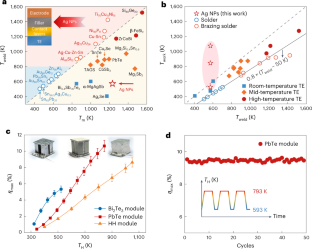2023-05-01 マサチューセッツ大学アマースト校
この新しく分かった特性は、このような盆地を通じて水が移動する方法を理解することに飛躍的な進歩であり、このような敏感で重要な生息地への環境影響を最小限に抑えるための鍵となる。
この研究のリードオーサーであるSarah McKnight氏は、これを理解することができなければ、フラットを保護することはできないと述べている。この研究の一部は、Albemarle Corporationによって資金提供されている。
<関連情報>
超乾燥地帯における多年生地表水動態を制御する水文経路の違いについて Distinct Hydrologic Pathways Regulate Perennial Surface Water Dynamics in a Hyperarid Basin
S. V. McKnight, D. F. Boutt, L. A. Munk, B. Moran
Water Resources Research Published: 31 March 2023
DOI:https://doi.org/10.1029/2022WR034046

Abstract
In water-stressed hyperarid basins, questions mount over the impacts of anthropogenic groundwater extraction and climate-driven perturbations on groundwater-surface water interactions and the resilience of ecosystem-critical surface water. Coupling groundwater with surface water observations from Sentinel-2 data provides an unprecedented opportunity to evaluate surface water connectivity with local aquifers following intense precipitation events in arid basins. Surface water area and groundwater level data were analyzed for trends following precipitation, including peak lag time, post-peak recession rates, and changes in hydraulic gradients. Results indicate variable connectivity following large precipitation events between surface water change and groundwater level fluctuations in the upgradient freshwater aquifer, whereas the downgradient brine-to-brackish area of the aquifer indicated virtually no connectivity with the aquifer. Comparison between precipitation and surface water response indicate distinct responses based on the physical relationship of the surface water body with the brine-to-brackish area of the aquifer. Lumped parameter modeling of surface water inundation also constrains the possible hydrologic dynamics of the post-precipitation response. While modeled influx to surface water seems primarily controlled by watershed hydraulics rather than direct hydraulic connectivity of the aquifers, the relationship between surface water and adjacent groundwater levels coupled with surface water area indicates that local aquifers are primarily connected to the surface water bodies through discharge via subsurface infiltration. Modeling results imply that the existence of brine-adjacent surface water in arid basins relies on upgradient discharge from freshwater aquifers. Our results further support that marginal surface water systems can serve as a critical recharge mechanism to local aquifers.
Key Points
- Post-precipitation inflow and outflow mechanisms of salar-adjacent surface water are distinct from recharge and discharge in local aquifers
- Surface water response to precipitation can be predicted and categorized based on its position to the brine groundwater and the salt flat
- Surface water resilience to drought relies on groundwater discharge from upgradient springs in hyperarid basins
Plain Language Summary
Surface water is important for desert ecosystems, but the future of surface water remains uncertain because of climate change and human consumption. Understanding how surface water responds to precipitation and interacts with groundwater is useful for better predicting future water availability. Advancements in the quality of satellite imagery provide an opportunity to combine satellite data with rain gauge and water level data to investigate the connection of surface water to rainfall patterns and groundwater. Observations from flooding behavior show two different types of surface water. Both types can be categorized by proximity to the brine that exists in the aquifer underlying the basin floor: transitional pools occur at the edge of the transition to brine while terminal lagoon systems occur in the brackish groundwater zone. Calculations indicate that the two groups have different inflow and outflow mechanisms that occur over varying timescales. These mechanisms indicate that intense rainfall events will lead to increased inundation over longer periods of time for transitional surface water bodies. However, despite rapid rates of recession, terminal pools will also experience prolonged inundation above background levels for up to a year after large rainfall events because of increased spring discharge from rainfall-driven recharge to groundwater.



